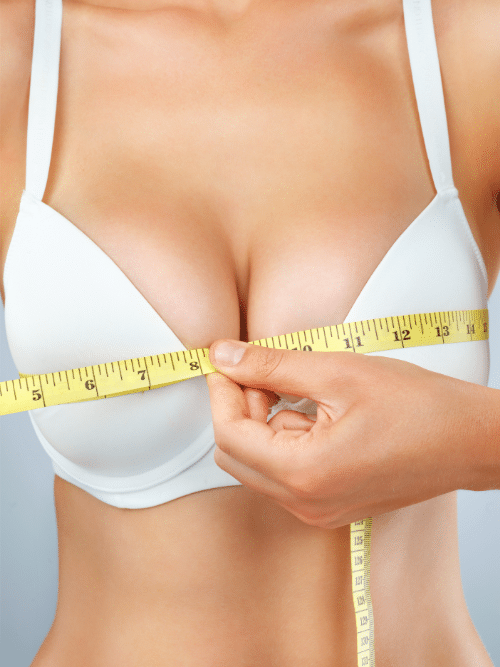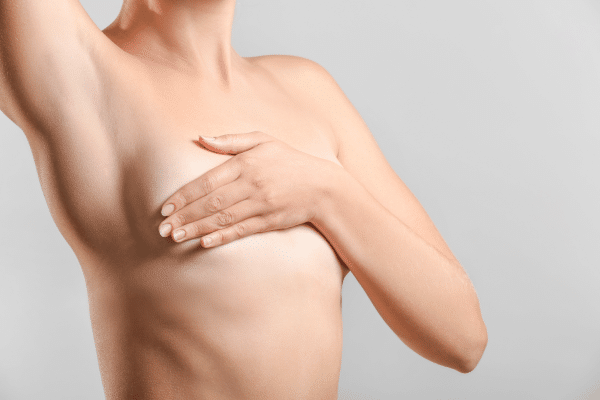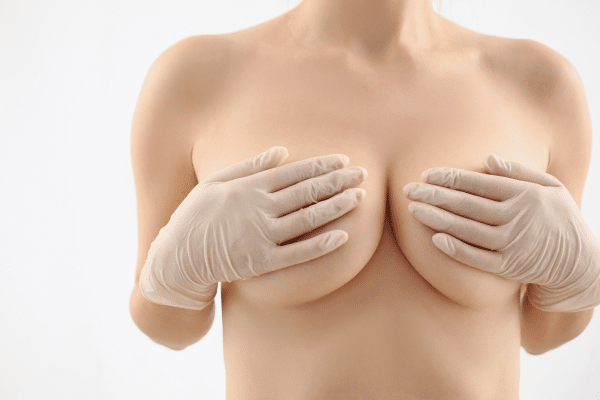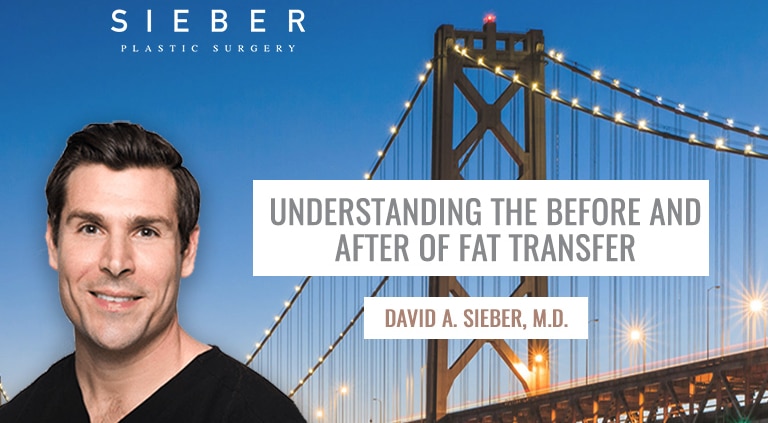What to Expect: Fat Transfer Breast Augmentation Before and After
Fat transfers are a long-lasting, safe and well-tolerated procedure for women that produces natural-looking results. Each year, many individuals undergo breast fat transfers with success and are pleasantly satisfied with their results.
WHAT ARE FAT TRANSFERS?
A fat transfer, also called fat grafting, is a procedure where the plastic surgeon makes a fat transfer from one area of your body to another. The goal of this surgical procedure is to augment or improve the location by fat grafting. The procedure involves:
- Using liposuction to extract adipose fat
- Process the fat
- Reinject purified fat into the improvement-needed area
Plastic surgeons have been reliably using fat transfers since the 1990’s as a way to enhance and improve the cosmetic appearance of the:
- Hands
- Breast
- Buttocks
- Face
- Hips
- Feet
However, today, doctors have documented the therapeutic benefits and advantages of fat transfers in the healing of scars and wounds, along with fat’s ability to repair breast tissue damage due to radiation treatment.
Fat transfers are a procedure growing in popularity. The natural results, and long lasting impacts are reasons many patients are opting for autologous fat transfer procedures more and more.
PREVALENCE OF FAT TRANSFERS
The fat transfer procedures that showed the most substantial increases in 2016 according to The American Society for Aesthetic Plastic Surgery are:
- Breast fat transfer (up 41% with over 25,000 performed)
- Face fat transfer (up 17% with 56,093 procedures performed)
- Buttocks fat transfer (19,019 procedures performed)
BEFORE FAT TRANSFER: COMMON REASONS TO HAVE FAT TRANSFER
The reason behind fat transfer to breast, is to fill in or augment volume-deficient spots. Other commonly injected or grafted areas include:
- Skin Depressions (after liposuction and scarring)
- Hands
- Buttocks and breast (for augmentation)
- Face (including lips)
You need to have donor areas for where the surgeon can take fat from. It’s essential you don’t have any circulation issues, either from smoking or a medical condition. For those who are looking for a place to search out breast augmentation before and after realself is a resource that many reportedly use.
Some common reasons for having fat transfer are:
1. BREAST AUGMENTATION

If you have sagging breasts, poor skin or want a substantial increase in the size of your breasts, a breast augmentation procedure with fat transfer isn’t a good option for you. The issue with only using fat to enhance the breasts lies in obtaining large fat volumes to “take.” For these patients a different breast augmentation procedure would be better. A breast implant procedure or a breast lift would more likely be the right procedure for them.
Still, if you look at fat transfer breast augmentation before and after, you can see that the results are natural and stunning. The result is a very natural breast augmentation. When done on the right patient a fat transfer breast augmentation procedure results in natural looking breasts.
2. FACIAL FAT TRANSFER
For facial fat transfer, the surgeon can remove fat from your thighs, abdomen transfer breast or other areas and inject it into facial creases like:
- Smile lines
- Laugh lines
- Crow’s feet
The surgeon can also fill in sunken areas of your lips, face and cheeks and acne scars. They can even use grafted fat to:
- Reduce lines between your mouth and nose
- Minimize forehead wrinkles
- Correct skin indentations or depressions
3. BREAST IMPLANTS PLUS FAT TRANSFER
If the surgeon needs to optimize your breast shape during breast implant surgery, fat transfer could be useful. If you’ve just had breast augmentation with implants and you have residual breast abnormalities, the surgeon can fill in the abnormalities with fat to produce an optimal shape and smooth contour during breast procedure.
4. BREAST AUGMENTATION WITH FAT TRANSFER
If you have breast defects after a breast cancer lumpectomy, fat transfer is an efficient technique for filling in these defects.
Fat transfer is also an option following mastectomy for total breast reconstruction, but to achieve enough breast volume, this is typically a multistage process requiring sequential, fat transfer breast part procedures.
5. HAND REJUVENATION WITH FAT TRANSFER
Fat transfer into your hands is good for:
- Plumping up wrinkled areas
- Adding volume
- Improving skin quality over time
- Covering underlying tendons and vessels
6. BUTTOCK AUGMENTATION WITH FAT TRANSFER

If you’re in decent general health, have realistic expectations and a positive attitude, you’d likely be a great candidate for these procedures.
AFTER FAT TRANSFER: WHAT CAN I EXPECT?
You’ll likely want to know what to expect as far as recovery and results of your fat transfer procedure.
RECOVERY
Fat transfer requires a shorter recovery period, it’s likely you’ll be able to resume your normal activity immediately following your procedure. You should expect some redness, bruising and swelling in both the recipient and donor sites. Your symptom severity will depend on the location and size of your treated area.
The only scarring you could have would be from liposuction, which the surgeon uses for removing excess fat, from the donor site. Since liposuction incisions are small, your scars would also be small and placed in hidden areas.
In some cases, however, the incisions can’t be hidden, but this depends on the location of the fat cells and deposits on your body. Also, the degree or amount of scarring will depend on the surgeon’s skills and technique and your genetic makeup.
Most scars from liposuction fade and are hardly noticeable over time. If you have any questions about scarring, make sure to ask your surgeon for advice and further information that can help you in the recovery process. If you are looking for a good photo of a fat transfer breast augmentation before and after reddit is a good place to ask.
RESULTS
You can expect the fat transfer areas to appear fuller and softer, providing you with a rejuvenated and refreshed appearance.
- The longevity of the results and survival of the fat depend on the skills of the surgeon, how they harvested and purified the fat and where and how they injected it. Fat transfer needs a surgeon who has highly developed skills based on knowledge of the technique and experience for them to perform it successfully.
- A microfat grafting process, while labor intensive, is the best way of ensuring a high percentage of grafted fat “takes.”
- When performed successfully, the injected fat establishes a new supply of blood from your body and obtains it’s required nourishment for survival. Results can and are usually permanent when this occurs, but there could still be a percentage of fat that doesn’t take and you’d require touchup procedures.
For the most healthy and beautiful outcome and safety, it’s essential you follow up with your plastic surgeon for evaluation at certain times as instructed, and whenever you’re concerned with or have questions about fat transfer healing and results.
Plastic surgeons are there to help and are always more than willing to assist with any questions you may have during your recovery process. Whether undergoing a breast enhancement, a fat grafting procedure for your face or any other autologous fat grafting procedure, you surgeon will be more than happy to help with any questions
QUESTIONS AND ANSWERS
How many people get facial fat transfer surgery each year?
As per statistics provided by I.S.A.P.S., over 500,000 facial fat grafting procedures are conducted globally on an annual basis. This trend is on a swift upward trajectory, accompanied by a notable level of contentment from both patients (91.1%) and surgeons (88.6%)
What is the rate of success for fat transfer to breast?
Regarding the effectiveness of fat grafting, around 55 to 80 percent of the fat obtained from other body areas and relocated to the breast region endures successfully. Essentially, this results in a success rate of 55 to 80 percent for breast augmentation through fat transfer.
How long does a fat transfer to your hands last?
Following a hand rejuvenation treatment that employs the patient’s own fat cells, individuals experience hands that appear smoother and more youthful. The outcomes of this autologous fat-based hand rejuvenation technique typically endure for a span of five to ten years, with the possibility of indefinite results in some cases.
How many buttock augmentation with fat transfer are performed each year?
Data from the Aesthetic Plastic Surgery National Databank illustrates a significant rise in the count of BBL (Brazilian Butt Lift) surgeries, escalating from 3,762 instances in 2011 to 61,387 cases in 2021.
Dr. Su commented, “Undoubtedly, the annual frequency of BBLs has been experiencing a rapid surge.” He further noted that South Florida holds the record for the highest number of BBL surgeries performed anywhere in the United States.
CONTACT DR. DAVID SIEBER FOR A FAT TRANSFER





